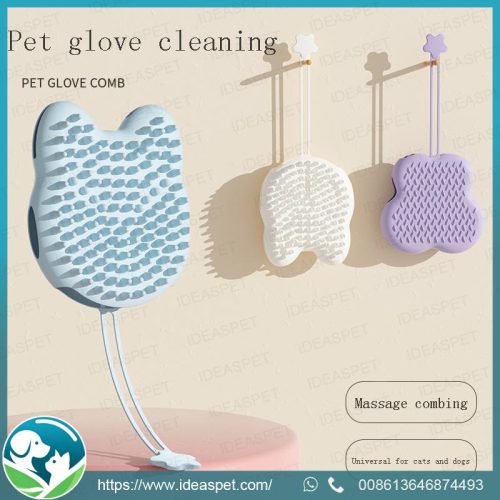Innovate to Dominate: Leveraging New Product Development and Patents for Sustained Competitive Advantage in the Pet Supplies Market
In today’s competitive pet supplies market, continuous innovation and effective intellectual property management are crucial for maintaining a competitive edge. Ideapets, as a leading manufacturer in the B2B pet supplies sector, can leverage new product development and patent registration to sustain and enhance its customer advantage. This essay outlines the strategic benefits of these practices and provides a roadmap for their implementation.
The Importance of Innovation in the Pet Supplies Market
Innovation drives growth and differentiation in any industry, and the pet supplies market is no exception. As consumer preferences evolve, the demand for unique, high-quality, and functional pet products increases. By continuously developing new products, Ideapets can:
- Meet Changing Consumer Needs: The pet care industry is experiencing rapid growth, with pet owners increasingly seeking products that enhance their pets’ well-being and convenience. Innovative products can address these evolving needs, ensuring Ideapets remains relevant and attractive to customers.
- Differentiate from Competitors: Unique and innovative products set a company apart from its competitors. By offering exclusive features or addressing unmet needs, Ideapets can build a strong brand identity and loyal customer base.
- Capture Market Share: Introducing novel products allows Ideapets to capture new market segments and expand its customer base. Innovative products can attract new customers who are looking for the latest and best solutions for their pets.
Developing New Products: A Strategic Approach
Effective new product development (NPD) requires a strategic approach that encompasses market research, ideation, design, testing, and commercialization.
- Market Research and Ideation: The first step in NPD is understanding market trends and customer preferences. Ideapets should invest in market research to identify gaps and opportunities. Engaging with customers, attending industry trade shows, and monitoring competitors can provide valuable insights. Brainstorming sessions and innovation workshops can then generate a pool of ideas.
- Design and Prototyping: Once potential product ideas are identified, the design phase begins. This involves creating detailed product specifications and developing prototypes. Ideapets should focus on both functionality and aesthetics to ensure the product appeals to end-users.
- Testing and Validation: Prototypes must undergo rigorous testing to ensure they meet quality standards and customer expectations. This phase includes both in-house testing and consumer trials. Feedback from these tests is crucial for refining the product before launch.
- Commercialization: The final phase is bringing the product to market. This involves production planning, marketing, and distribution. Ideapets should develop a comprehensive go-to-market strategy that includes promotional activities, sales training, and channel management.
The Role of Patents in Protecting Innovation
While developing new products is essential, protecting these innovations is equally important. Patents provide a legal means to safeguard Ideapets’ inventions, preventing competitors from copying or exploiting them.
- Securing Exclusive Rights: A patent grants Ideapets the exclusive right to produce, use, and sell the patented invention for a certain period, typically 20 years. This exclusivity helps the company recoup its investment in R&D and gain a competitive advantage.
- Enhancing Market Position: Patents can strengthen Ideapets’ market position by deterring competitors. When a company holds patents on key products, it becomes difficult for others to enter the market with similar offerings, thus protecting market share.
- Creating Revenue Streams: Patents can also generate additional revenue through licensing agreements. Ideapets can license its patented technology to other companies in non-competing sectors, creating new income sources.
- Building Brand Value: A strong patent portfolio enhances the company’s reputation as an innovator. This not only attracts customers but also investors, partners, and talented employees who want to be associated with a leading-edge company.
Steps to Registering Patents
Registering a patent involves several steps, each requiring careful attention to detail to ensure the patent is granted and enforceable.
- Idea Documentation: The first step is to document the invention thoroughly. This includes detailed descriptions, drawings, and claims that outline the invention’s unique features and benefits.
- Patent Search: Conduct a comprehensive patent search to ensure the invention is novel and not already patented. This step helps avoid potential legal issues and refines the patent application.
- Drafting the Patent Application: A well-drafted patent application is crucial. It should clearly describe the invention, its functionality, and its industrial applicability. Hiring a patent attorney can be beneficial to navigate the complexities of patent law.
- Filing the Application: Submit the patent application to the relevant patent office. This can be done nationally or through international treaties like the Patent Cooperation Treaty (PCT) for broader protection.
- Examination and Approval: The patent office examines the application to ensure it meets all legal requirements. This process may involve correspondence with the patent examiner and making necessary amendments to the application.
- Maintenance and Enforcement: Once granted, Ideapets must maintain the patent by paying periodic fees. Vigilance is also required to enforce the patent rights against potential infringers.
Conclusion
For Ideapets, continuous innovation and robust patent protection are key to maintaining a competitive edge in the pet supplies market. By strategically developing new products and securing patents, Ideapets can meet changing consumer needs, differentiate itself from competitors, and protect its market position. This dual approach not only drives business growth but also builds a strong, innovative brand that appeals to customers and stakeholders alike.







